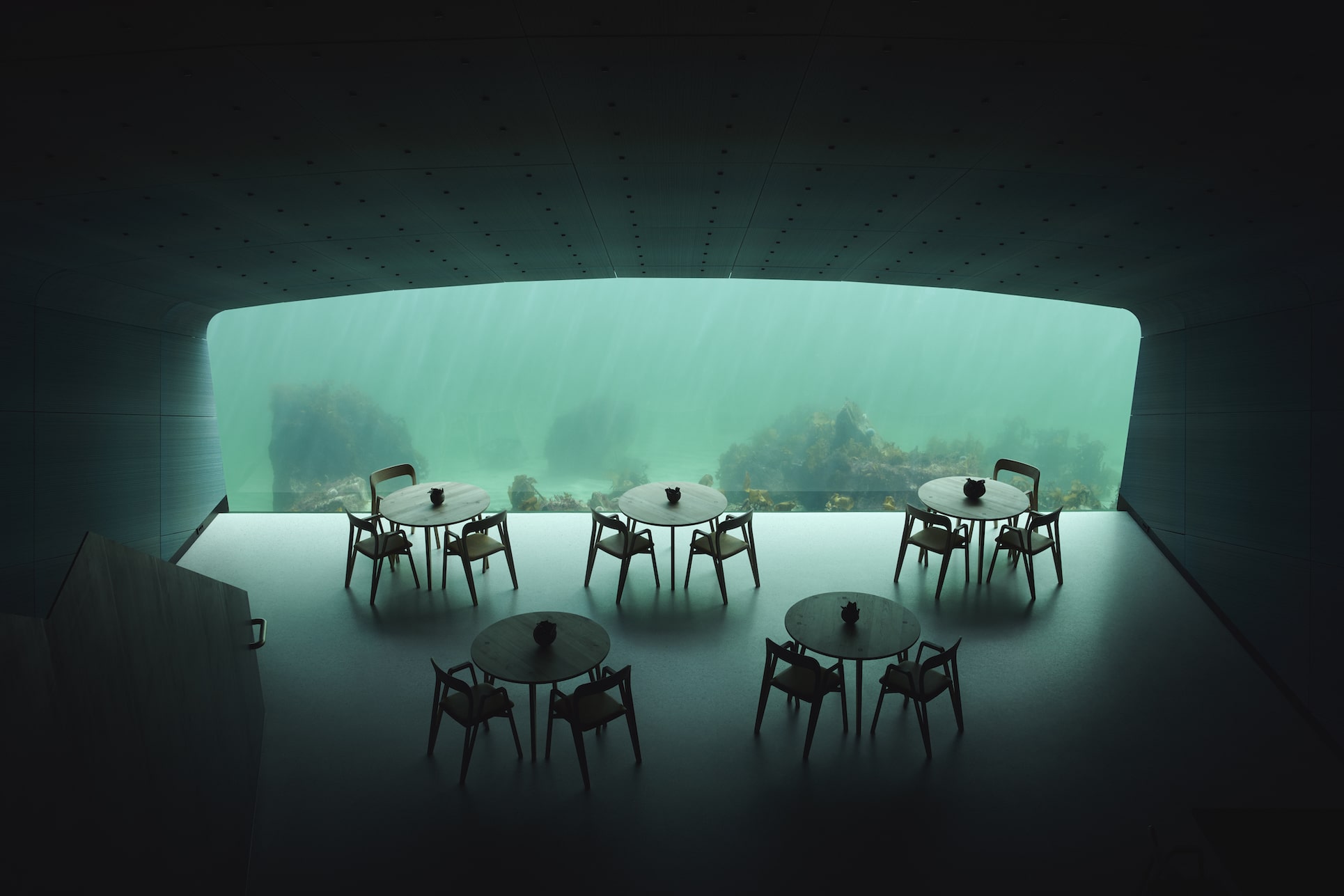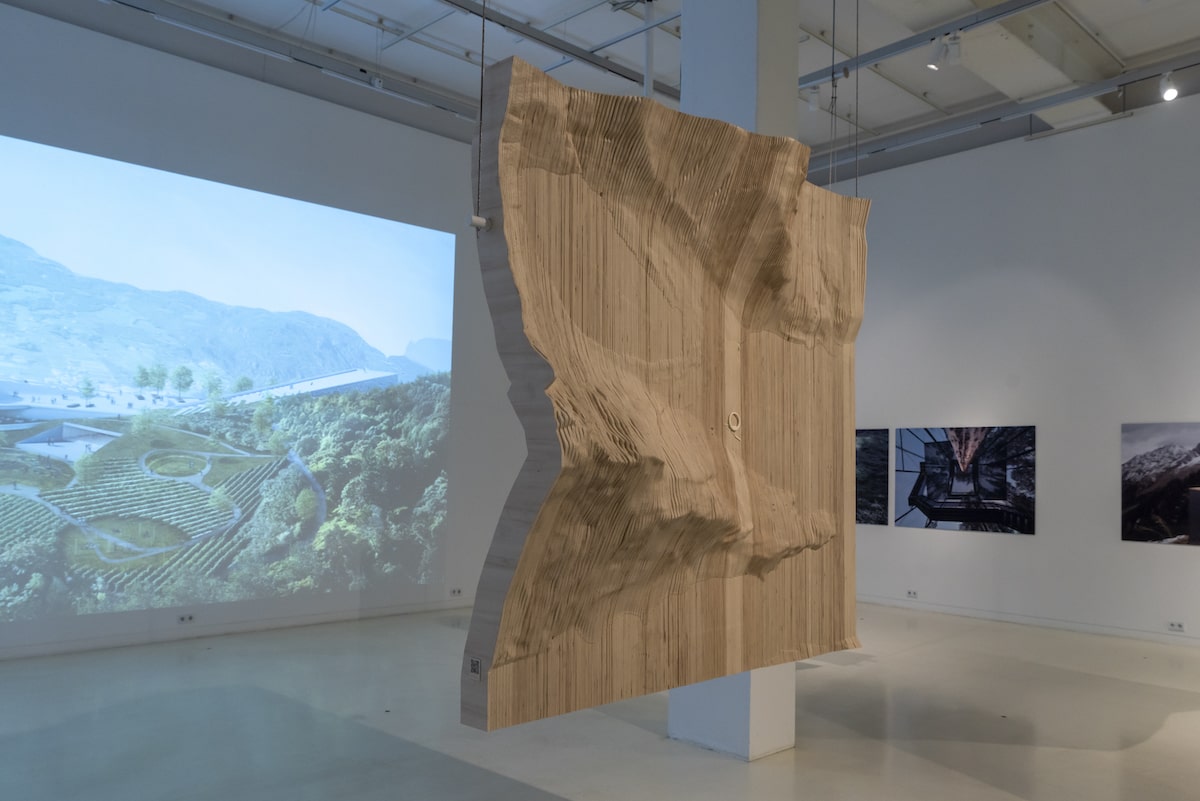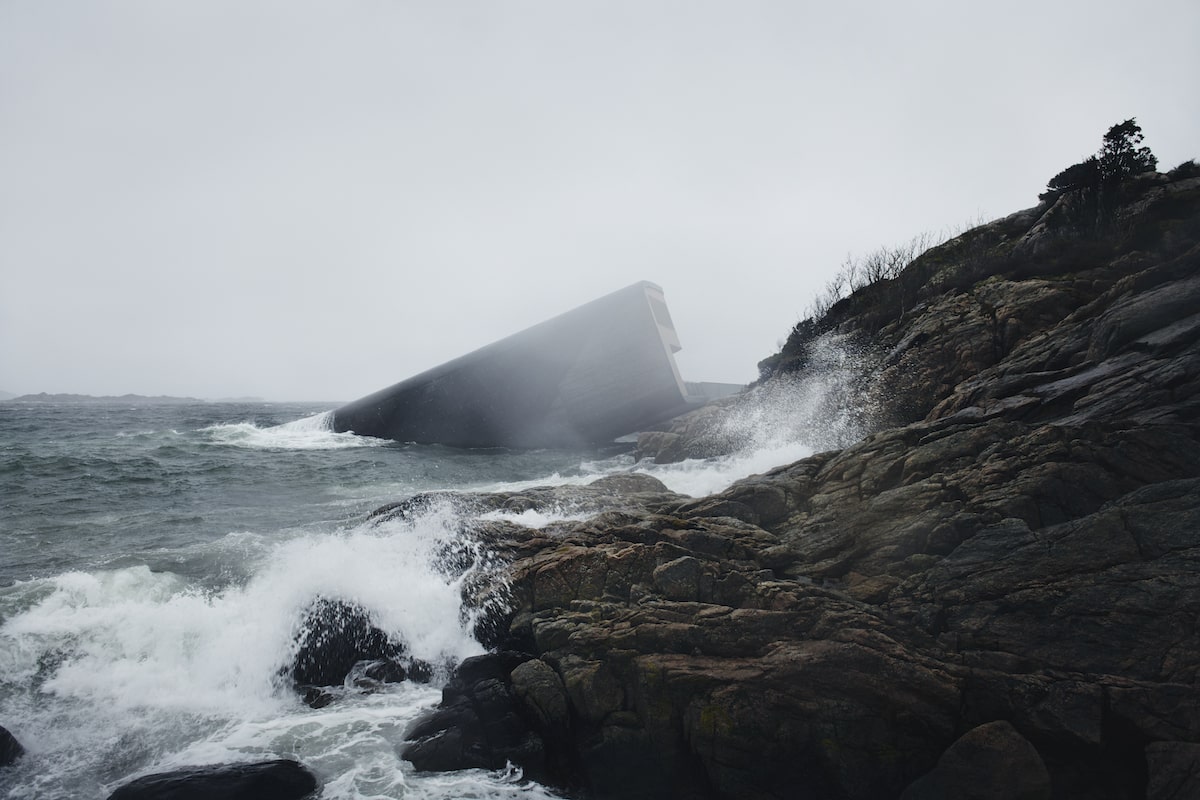
Exhibition | How the Norwegian firm embeds architecture in nature
The spatial effects of architecture embedded in nature are examined at the ‘Arctic Nordic Alpine – In Dialogue with Landscape,’ an exhibition currently in view (and until August 20th) at the Berlin-based Architecture Forum Aedes. The exhibition, featuring the work of the architecture firm Snøhetta, winners of the AW Architect 2020, is part of an ongoing conversation on sustainable design addressed at Aedes.
Snøhetta, the Norwegian firm whose heyday began in the turn of century with the colossal New Library of Alexandria in Egypt, injects their projects with the consciousness of nature, the mysticism of mountains, and the splendour of the sea. Named after the highest range of mountains in Norway, Snøhetta pays tribute to their heirloom and local landscapes by blurring the boundaries between nature and the places we inhabit.
The hosting venue Aedes continues to contribute to the dialogue on sustainable design by featuring architects who engage in preserving the environment. Earlier this year, Junya Ishigami & Associates, a collective whose Art Biotop Water Garden in Japan won them the Obel Award, were on stage. Junya Ishigami & Associates’ Water Garden highlighted the coexistence of human ingenious and exaltation of nature in an ethereal, man-made flooded forest. Nowadays, Snøhetta explores our physical placement in nature and the way we interact with our surroundings.

THE EXHIBITION
As we continue to move into earth exploration and the commodification of natural landscapes, not to mention the escalating environmental crisis, it has become imperative to actively provide political, economical, social and physical structures that can prevent further destruction. With this in mind, Kjetil Trædal Thorsen, co-founder of Snøhetta, explains that the firm is focused on developing projects that enhance our sense of nature:
“let us involve the stories told by nature, translating
these stories into architectural form and language.”
An instance is the Perspektivenweg (2018), a work that introduces ten architectural elements along the alpine trail of the Nordkette mountain range in Austria. The elements include benches and viewing platforms that blend consistently into the landscape. They offer visitors standing and resting points staggering vistas from different angles. The architectural intervention invite visitors to join a time that is slower — don’t rush, take your time and make sure you dedicate enough time to look around, let the immensity of the landscape resonate with something inside yourself.

Another project embedding architecture in nature is the Under (2019), an astonishing architectural poem coming out of the sea, ending above the rocky coastline. Under is situated at the conjunction where the sea storms against Norway’s southern tip — that means, you get to experience severe, nordic weather conditions. The five meters below the level sea construction functions both as a petit restaurant with a panoramic view beneath the waterline, and a contributor to the marine life as it’s designed to operate as an artificial reef over time. In this way, Snøhetta achieves a holistic approach in blending architecture within nature. “Under is a natural progression of our experimentation with boundaries,” says Trædal Thorsen.

Our prevailing collective mode of living resists the rhythms and timings of nature in an effort to control it. With their most recent projects, Snøhetta invites us to reflect on our physical — and mental — position within the environment: to “understand when we are in nature; when we are on top of nature.”
We are guessing it may be hard to envision architectural interventions, specially if as imposing and seemingly-invasive as Snøhetta’s works are, fitting environmental narratives, but it’s essential that we begin by actualising the way we perceive ourselves in relation to our surroundings. The Artic Nordic Alpine is a great start to reflect on how we mediate urban architecture through nature. So if you’re in Berlin, swing by Aedes and share with us your feelings.
Where: Aedes Architecture Forum – Christinenstraße 18, D-10119 Berlin
How: Free entry – check for opening hours
When: July 4th – August 20th
+ Words: Alejandra Espinosa, Luxiders Magazine Editor







